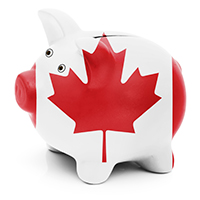Provincial Budget Round Up (Everybody But Ontario)!

Geoff Currier
Provincial budgets have now been tabled from every province but one: Ontario. This includes those recently delivered by Newfoundland & Labrador on April 9 and PEI on April 10. Neither province introduced tax hikes, but both placed emphasis on helping businesses in their province. Check out the details:
Newfoundland & Labrador – No Personal Tax Increases
Finance Minister Siobhan Coady delivered her 6th budget on April 9th. There were no new income tax hikes and some good news for business – a tax rate decrease! She had hoped to be able to get the province back into a balance this year but that has been pushed back until next fiscal year.
As with most other provinces, there is a contingency fund to deal with the fallout of the tariff war with the United States. In the case of Newfoundland and Labrador, the amount is $200 million.
No Personal Tax Increases: The good news for residents is that there are no tax increases in this budget. This will be a welcome piece of news for the province which suffers with the country’s highest unemployment rate of 10%, a figure which does not include those who have given up the job search or those who have never been in the workforce. The budget forecasts an even higher unemployment rate in the coming year because of tariffs.
A Small Business Tax Rate Decrease. This budget sees another reduction in the small business tax rate from 3% to 2.5% on income tax payable and exemption from the Health and Post-Secondary education tax from $1.3 million to $2 million.
There’s also a 10% Manufacturing and Processing Investment Tax Credit directed at the fishery, farming and forestry sectors for them to invest in equipment.
Coady has added a “20 per cent green technology tax credit to help businesses with capital costs for such things as equipment for energy conservation, clean energy generation, and efficient use of fossil fuels.” as per the budget document.
PEI Is Open For Business
Canada’s smallest province (population approximately 180,000) brought down its provincial budget on April 10 and amongst other things, it declared “We are Open for Business” with an increase in the small business threshold to $600,000 and a 1% reduction in corporate income tax. Here’s more from the mighty PEI!
Lower Taxes: PEI is offering some tax relief to both individuals and businesses. The small business tax threshold will be raised to $600,000 and the corporate income tax is being lowered by 1% from 16% to 15%, effective July 1.
Lower income Islanders got some good news in this budget. The Basic Personal Amount (BPA) is being raised to $14,650. Beginning in January of 2026, the BPA will once again go up, this time to $15,000. In addition, all five tax brackets will increase by 1.8%. Initially these changes had not been planned to take effect until 2027. Instead, they too will take effect in January of 2026.
As is the case elsewhere, PEI is hiking its minimum wage. It will go up to $17 an hour.
While not a direct tax cut, there is good news for homeowners. The Home Heating Assistance Program is getting a $3 million increase to a total of $7.7 million.
New Loans for Business. Included in this budget is a $42 million tariff contingency fund of $32 million as well as an additional $10 million for a program designed to provide flexible loans in the face of tariffs.
The Oyster industry is also getting some support in this budget to the tune of $3 million. The money will be used to start a genome surveillance project.
Health Care: The competition for skilled healthcare workers is a theme we’ve seen in every province and territory this year. PEI is prepared to spend money recruiting and retaining those workers. There is a plan to certify up to 40 internationally trained physicians each year and $650,000 is being devoted to the recruitment of internationally trained nurses.
Cash is also being directed to the training and retaining of more home grown medical expertise, including nurses and the spending of $16.8 million to help open up UPEI’s first ever Faculty of Medicine.
Education: This budget provides $9.2 million in new funding for increased staffing levels in K-12 schools. Lunch programs and early childhood programs are also receiving new funding.
Bottom Line: This budget offers tax relief for a province with an unemployment rate of 7.5%. It anticipates having to spend money to deal with the fallout of tariffs. It also serves up the highest deficit in the province’s history. Most Canadian provinces and territories will spend more than they take in this fiscal year.